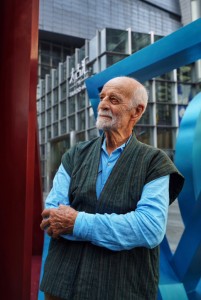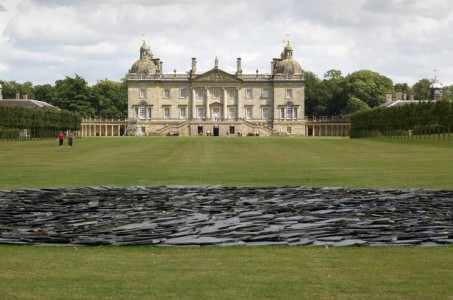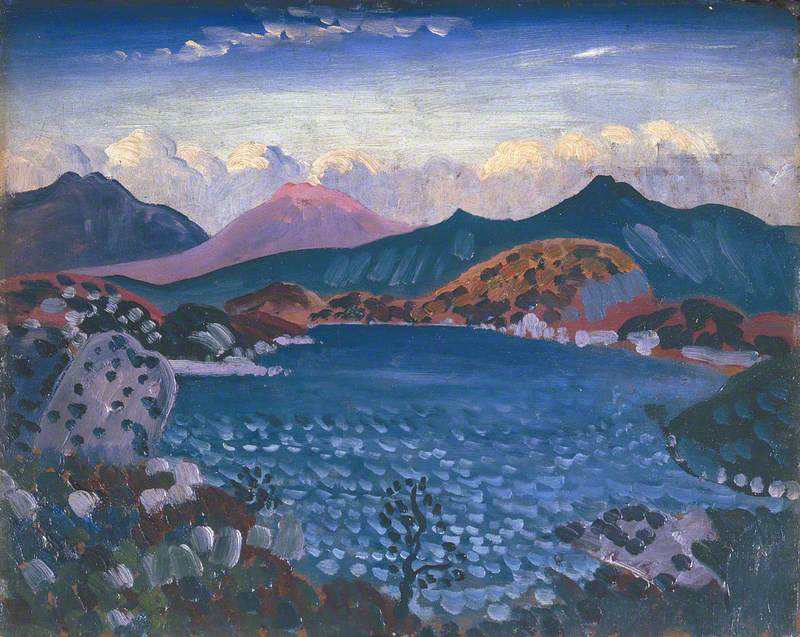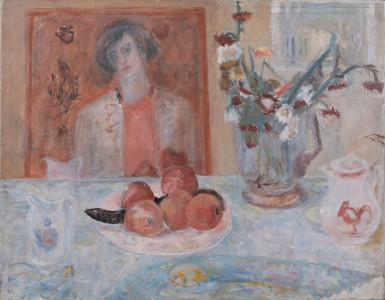I wrote the foreword to the new book Kurt Jackson's Sea (Lund Humphries, 2021) because I wanted to draw attention to a living artist whose work doesn't fit, at all, into what the art world regards as contemporary art. Yet in my opinion, Kurt Jackson's art is genuinely radical, and no one can say it isn't contemporary or urgently political. Jackson's art is genuinely radical because it is an intrinsic part of his wider, awareness-changing agenda. His is a life lived with a purpose.
Kurt Jackson
The problem is that it doesn't look like that to anyone trained under the ethos of conceptualism, where politically correct ideas are worked out then illustrated with found objects, rarely (if ever) painting, and never, landscape painting. Jackson's painting looks, to anyone used to that world, totally out of place, a throwback to earlier times. But I argue in this book, and again here, that this isn't at all the case.
I was delighted to find that Art UK had 10 works by him on the site, but most of these are in academic and other institutions, and only a couple in public art galleries and museums. His work merits being much more widely represented on the public scene, not least because it is and will be immensely popular. But that in itself, in the upside-down world of contemporary art, is a point against him. Any artist with any ambition wants to be both popular and profound. Jackson's work as a whole achieves that goal.
Jackson resisted art at first. His parents were both painters who earned their living by teaching. Fascinated by nature, he preferred science, studying zoology at Oxford where he met his wife, Caroline.
He found, however, that he spent a lot of time hanging around the Ruskin School of Art, where drawing was still taught. Leaving university, the couple decided to walk across sub-Saharan Africa together, from the west coast to the east. All they had with them, after a bit, were Kurt's sketchbooks.
Sun and Rain, Strong Winds, Drilling Carnsew Mine
1998–1999
Kurt Jackson (b.1961) 
Leafing through these now is a wonder: the whole year's journey caught in miniature, in easy bursts of washes and singing pencil marks, huts and palms and barren grasslands, beetles, flowers and children's faces. When it was over, Jackson knew what he wanted to do with his life: not teach – for him, that sucks all energy out – but live by, with and through art. And he's never stopped doing that.
Kurt Jackson working on the River Tamar
Jackson is a natural, born artist. He lives and breathes marks and colours, spontaneously catching a sudden squall at sea, dazzling sunshine on a track in Greece, soft, evening light reflected in the Tamar – all subjects represented in the works represented on Art UK. But you wouldn't necessarily see by looking at them that his art, his whole life, had a much broader scope encompassed by a serious intention.
Distant Voices, Slight Echo, Coolness, Stillness, Geevor Stope
2007
Kurt Jackson (b.1961) 
Jackson's subject is nature, both human nature and the natural world, and the relationship between the two – a vital subject for us today (otherwise, we've had it).
The artist is not alone. He is part of a rising tide of awareness of what we are doing to the planet. He is the equivalent in art to films of the natural world, such as those of David Attenborough, Alastair Fothergill and Keith Scholey, but his art goes a step further, or, rather, takes a step back, as we all have to do if we are going to save our world.
Jackson's art is all hand-made – everything in it is seen and felt – it's not manufactured in any way, not exploitative of resources at all. His isn't an outmoded activity, but now an urgent contemporary necessity, the equivalent in art to localised, organic vegetable gardening. His art makes personal contact – and therefore, by implication, individual involvement – paramount.
Celebration of nature is a speciality of Britain. It can be seen in J. M. W. Turner's superb, spontaneous watercolours of sunlight fracturing in the upper atmosphere, in the little oil studies of clouds made by John Constable, with scribbled notes, dates and times, inspired by the scientific observations of his contemporary Luke Howard, in the bewilderingly intense examinations and poetic descriptions of rock formations and plant growth by John Ruskin, and, in our time, the paintings of butterflies on the wing by the late David Measures, annotated with descriptions of what else is happening around.
None of these works set out to be 'art' in the conventional sense of their times, but all of them are and in a very modern way. Jackson's work is a contemporary manifestation of this tradition, exceptional in its all-around scope, its variety, richness, quality and, on occasions, sheer scale. His oeuvre as a whole is an immense, consistent achievement, which you can only get a glimpse of in the works represented on Art UK.
Jackson is one of the most genuinely political artists of our time – genuine because he not only expresses but lives his beliefs. He charts in paint, for example, the building of Greenpeace's Rainbow Warrior III and sketches, as they make them, their inspiring journeys across the ocean, just as he has charted, over the years, his wife, Caroline reforesting a field. It is series like these – and there are several similar themes pursued in his work – that need to be seen in the public domain.
But I would like to push further than that, and cheekily suggest two paintings by him that merit being seen in public galleries and museums. I illustrate them here.
Mermaid's Tears
2016, oil on canvas by Kurt Jackson (b.1961) 
The first is Mermaid's Tears (2016). There are two spaces in this picture: the dappled dance on the canvas below – a playful evocation of that other Jackson, Pollock – and the spatial illusion that the painter creates in the middle distance, light sparkling on a rippling dark. This illusion is a curved projection from our eyes, our human way of making sense of what we see, different, we're pretty sure, from any other animal's perception. So nature and human nature are both the subjects of this picture. This is modern abstract art morphing into something new, reconnecting to the natural sights we now so urgently need to appreciate and protect.
Taxonomy of a Cornish Foreshore
2018, oil on canvas by Kurt Jackson (b.1961) 
The second painting is Taxonomy of a Cornish Foreshore (2018). Again, for Jackson, nature and human nature are all one, and he wants to catch the whole thing. That's why he often annotates his paintings with scientific observations, times, places, things happening that he can't put in or, even, necessarily see. So, here, he's labelled all the species that he knows are living on this shore. It's this minuteness in nature that we now have to appreciate and protect.

Jackson's art makes actual the brightness of seeing clearly, moments of heightened consciousness, vital both for science and for art. There is nothing sentimental or expressive about this. Jackson shows what is, which is the reality we all have to begin with, to build a world sustainable for us all.
Julian Spalding, former museum director and writer
Kurt Jackson's Sea is published by Lund Humphries


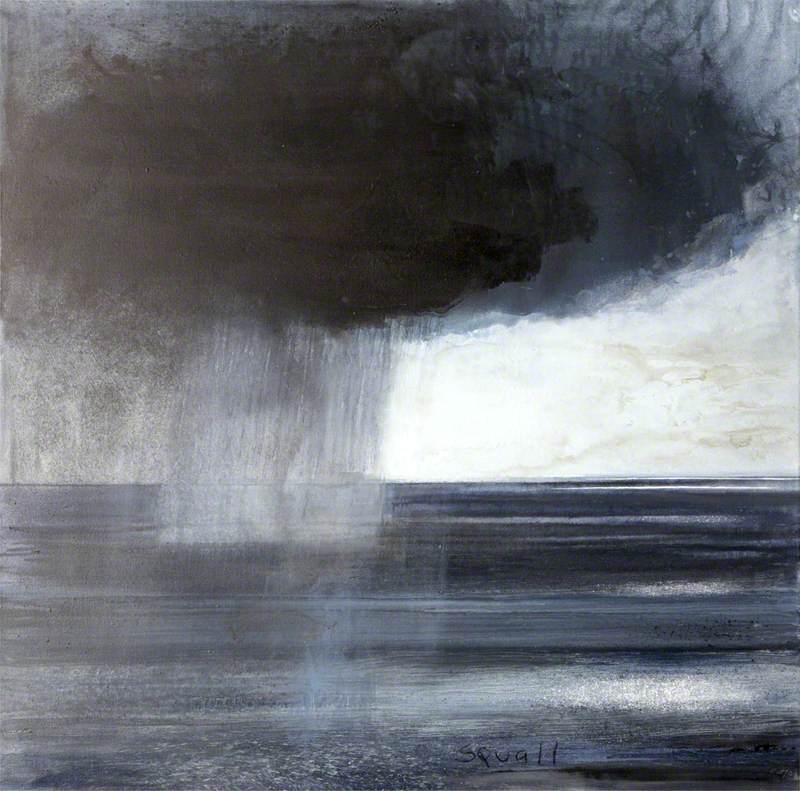




!['Phoebe Boswell: A Tree Says [In These Boughs The World Rustles]' at Orleans House Gallery](https://d3d00swyhr67nd.cloudfront.net/w800h800/artuk_stories/boswell753x1000-edited-thumb-1.jpg)
